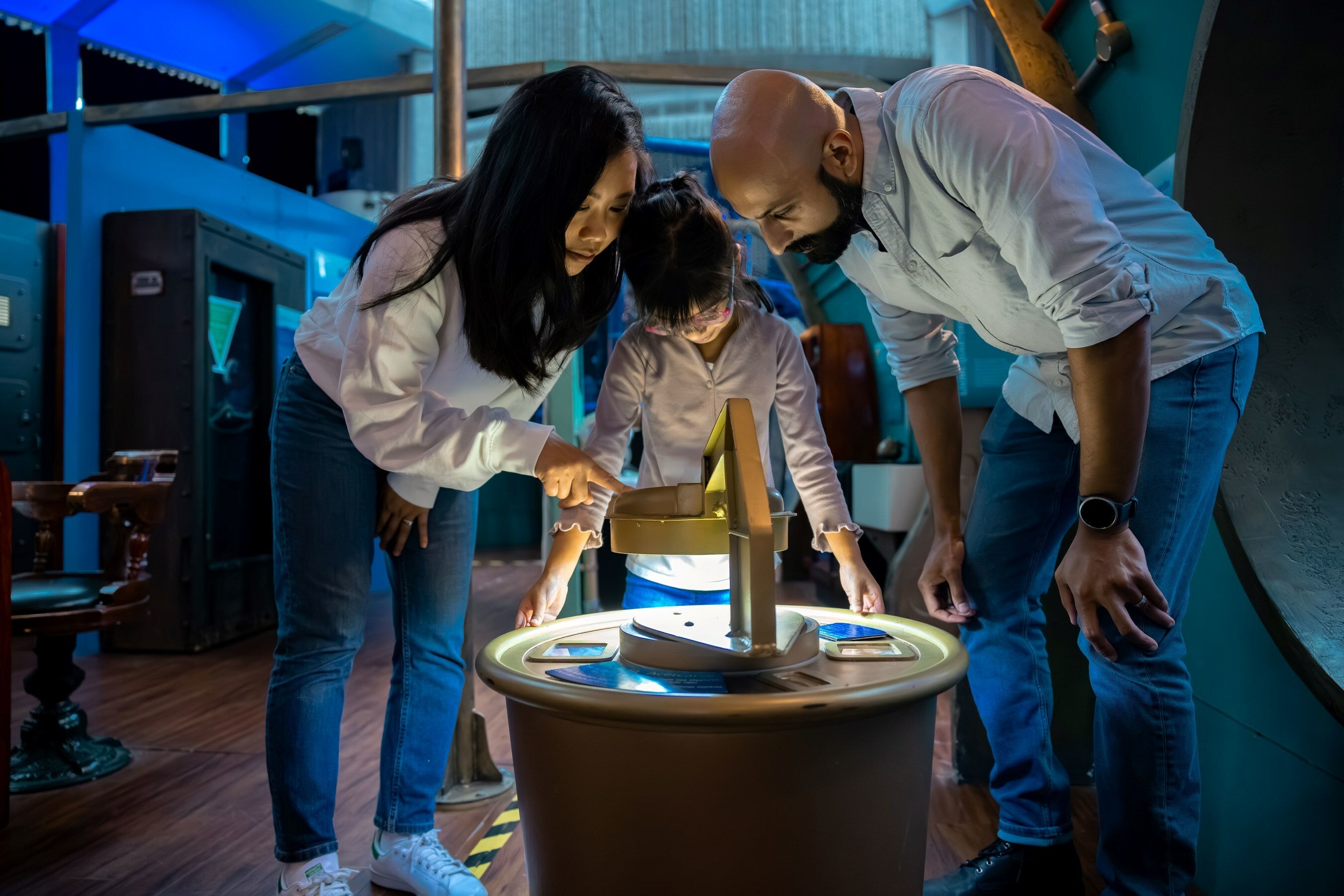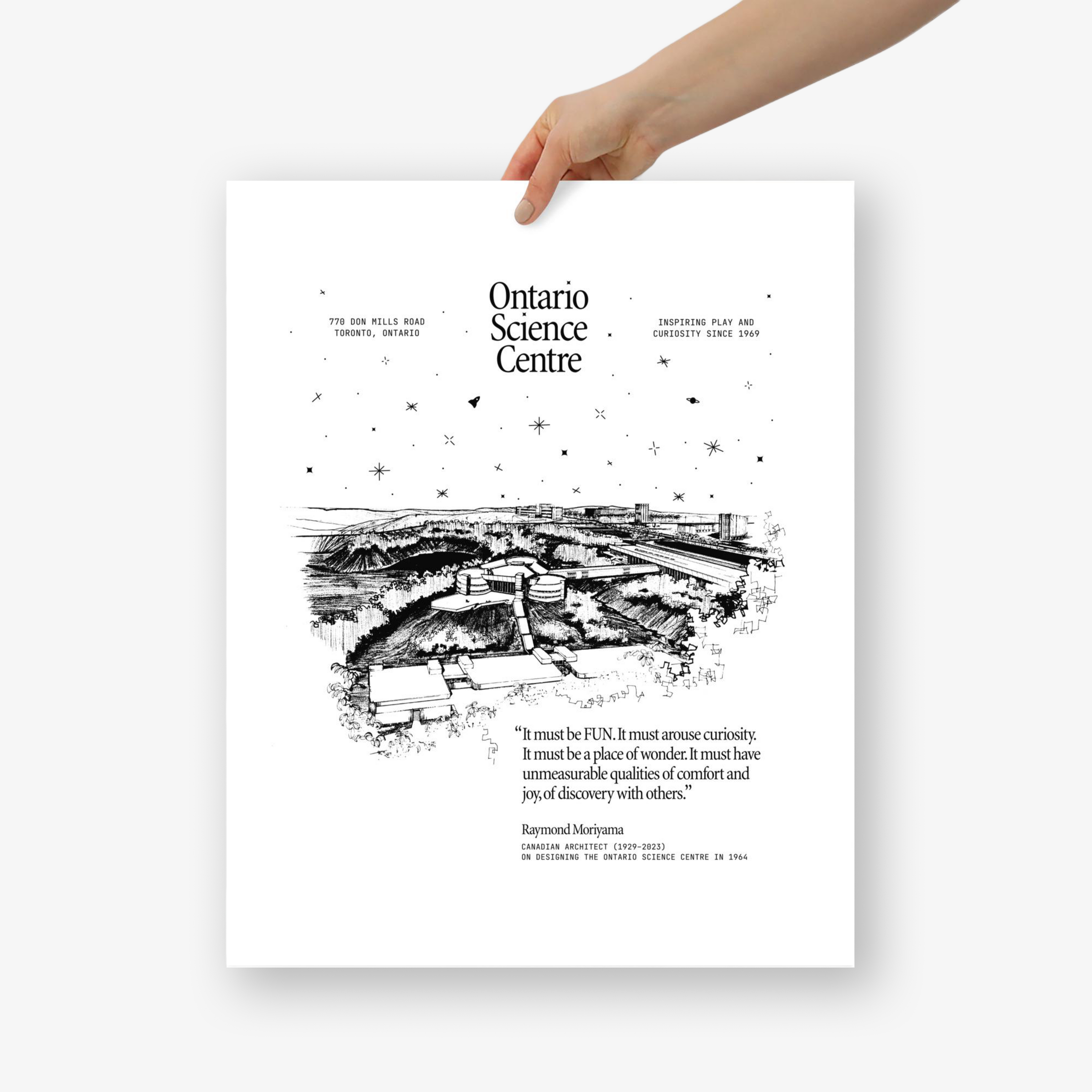Why did Doug Ford aburptly shut down the Ontario Science Centre on June 21?
On Friday, June 21, at 4pm, the Ontario government announced the permanent and immediate closure of the Ontario Science Centre with only a few hours notice, citing an engineering report by Rimkus Consulting Group.
However, that same engineering report indicated that only 6% of the roof panels require repair this year, and these panels are not in exhibit areas. Key exhibition areas can operate safely this summer, even without immediate roof repairs.
The government’s claim that the Science Centre’s roof posed a safety risk was a manufactured crisis.
By exaggerating safety and cost concerns, the government manufactured a crisis to rationalize the abrupt closure and relocation of the Science Centre, serving their hidden agenda rather than public interest.
Closing the Ontario Science Centre frees up its valuable land for private development, a move that benefits developers more than the public.
This decision ignores the possibility of simply repairing the roof at a lower cost and prioritizes potential profits over maintaining a cherished public institution.
Integrating the Science Centre into the Ontario Place redevelopment appears to be a ploy to legitimize the massive and controversial project.
Despite the high costs and questionable benefits, the government is using the Science Centre relocation to bolster their case for redevelopment, disregarding the fact that the existing structure could be repaired more economically.
This move highlights a disregard for public funds and a preference for private interests.

Watch the video
The Ontario provincial government shut down the Ontario Science Center with only a few hours notice, citing safety concerns coming from a few damaged roof tiles. What seemed like a simple decision, made to keep people safe, has received a lot of criticism for being a calculated political move.
Doug Ford’s decision involves a backroom political deals, money making opportunities, and maybe even corruption—all against the public interest of Ontario.
Why reopen the Science Centre?
-
On Friday, June 21, at 4pm, the Ontario government announced the permanent and immediate closure of the Ontario Science Centre, citing an engineering report by Rimkus Consulting Group.
The provincial government stated that these serious structural issues will require a complete roof replacement, costing over $40 million and taking two to five years.
However, that same engineering report indicated that only 6% of the roof panels require repair this year, and these panels are not in exhibit areas. A peer review by VanBoxmeer & Stranges Engineering Ltd confirmed these findings.
Key exhibition areas can operate safely this summer, even without immediate roof repairs.
-
A torrential downpour overwhelmed Toronto’s infrastructure on July 16. Flooding and water damage was widespread in Toronto: City Hall, Union Station, the Don Valley Parkway, Lakeshore Boulevard, Evergreen Brickworks etc.
Even Premier Doug Ford’s family home in Etobicoke was flooded.At the Ontario Science Centre, however: nothing happened.
The Science Centre’s resilience during such a heavy storm questions the necessity of the closure and the urgency of relocating the facility.
Infrastructure Minister Kinga Surma confirmed that while the roof withstood the recent storm, staff are closely monitoring the situation.
-
The Ontario Science Centre must reopen immediately for kids and students because its closure abruptly cancelled the Science School program, disrupting educational plans and depriving students of unique, hands-on learning experiences.
Safe repair options exist, and reopening would restore this valuable resource, which has historically inspired students to pursue impactful careers in science and technology. Public support and outcry has reinforced the importance of keeping this interactive and educational institution accessible.
-
The Ontario Science Centre can reopen immediately because generous donors have committed $2.5-million for the necessary roof repairs.
Geoffrey Hinton, the ‘Godfather’ of AI, pledged $1-million, but only if the government keeps the Science Centre where it is.
Sabina Vohra-Miller, a public health science expert, also offered $1-million, highlighting that immediate repairs can be done safely and inexpensively.
Adam McNamara, an entrepreneur and angel investor, offered over $500k to cover the costs of immediate roof panel repairs, questioning the government’s motives.
These donations would cover the short-term costs and allow the Ontario Science Centre to remain open this summer, preserving its vital educational programs for kids and students.
-
The Monday after the closure, on June 24, 2024, Infrastructure Ontario issued an RFP for a 50,000 to 100,000 square foot commercial/retail space to house a temporary Science Centre, set to open in 2026.
This temporary location will be much smaller and likely more remote than the current site and will remain for up to eight years until the new facility at Ontario Place opens between 2030-2034.
Ironically, relocating to a temporary location will cost up to $83M, more than double the $22–$40M cited for roof repairs that caused the Centre’s abrupt closure.
The most economical option appears to be repairing and reopening the existing Science Centre.
-
The Science Centre serves thousands of families in the community and is a job hub. Along with the Aga Khan Museum and the Japanese Cultural Centre, this area is one of the few major tourist destinations outside the downtown core. This should be celebrated, not broken apart.
-
The Ontario Science Centre is safe to reopen because the safety concerns cited for its closure are exaggerated.
Despite the dramatic displays of fences and scaffolding, hundreds of employees continue to work inside daily, indicating that the building remains structurally sound and safe for occupancy.
-
The Ontario Science Centre holds architectural significance as Ontario’s first centennial building, commissioned to celebrate Canada’s 100th anniversary in 1967. The Centennial Commission aimed to create a landmark that symbolized innovation and progress, embodying the spirit of the centennial celebrations.
Designed by Raymond Moriyama, the Science Centre’s modernist architecture and integration with the natural landscape were groundbreaking. As a centennial project, it stands as a testament to the era’s vision of fostering public education and scientific exploration.
-
In a public statement from Moriyama Teshima Architects, the firm that originally designed the Ontario Science Centre, the architects emphasize that the existing building can be revitalized with manageable repairs, which they are willing to perform pro bono.
MTA states that repairing the current structure is more eco-friendly than building a new one at Ontario Place. The current site is also ideal due to its location in a growing urban area with new transit links. Moving to a smaller facility would weaken the Centre’s educational and community impact.
“Preservation rather than erasure of our cultural heritage is the only responsible approach to evolving our cultural identity.”
-
The Ontario Science Centre, established in 1969, is renowned for pioneering interactive science education. As one of the first interactive science museums globally, it set new standards by encouraging hands-on learning. Its team has developed world-class exhibitions, inspiring similar initiatives worldwide. As a key cultural attraction in Ontario, it has shown how science museums can be integral to a city’s cultural landscape.
-
On Friday, June 21, at 4pm, the Ontario government announced the permanent and immediate closure of the Ontario Science Centre, citing an engineering report by Rimkus Consulting Group.
The provincial government stated that these serious structural issues will require a complete roof replacement, costing over $40 million and taking two to five years.
However, that same engineering report indicated that only 6% of the roof panels require repair this year, and these panels are not in exhibit areas. A peer review by VanBoxmeer & Stranges Engineering Ltd confirmed these findings.
Key exhibition areas can operate safely this summer, even without immediate roof repairs.
-
The Ontario Science Centre must reopen immediately for kids and students because its closure abruptly cancelled the Science School program, disrupting educational plans and depriving students of unique, hands-on learning experiences.
Safe repair options exist, and reopening would restore this valuable resource, which has historically inspired students to pursue impactful careers in science and technology. Public support and outcry has reinforced the importance of keeping this interactive and educational institution accessible.
-
The Monday after the closure, on June 24, 2024, Infrastructure Ontario issued an RFP for a 50,000 to 100,000 square foot commercial/retail space to house a temporary Science Centre, set to open in 2026.
This temporary location will be much smaller and likely more remote than the current site and will remain for up to eight years until the new facility at Ontario Place opens between 2030-2034.
Ironically, relocating to a temporary location will cost up to $83M, more than double the $22–$40M cited for roof repairs that caused the Centre’s abrupt closure.
The most economical option appears to be repairing and reopening the existing Science Centre.
-
The Ontario Science Centre is safe to reopen because the safety concerns cited for its closure are exaggerated.
Despite the dramatic displays of fences and scaffolding, hundreds of employees continue to work inside daily, indicating that the building remains structurally sound and safe for occupancy.
-
In a public statement from Moriyama Teshima Architects, the firm that originally designed the Ontario Science Centre, the architects emphasize that the existing building can be revitalized with manageable repairs, which they are willing to perform pro bono.
MTA states that repairing the current structure is more eco-friendly than building a new one at Ontario Place. The current site is also ideal due to its location in a growing urban area with new transit links. Moving to a smaller facility would weaken the Centre’s educational and community impact.
“Preservation rather than erasure of our cultural heritage is the only responsible approach to evolving our cultural identity.”
-
A torrential downpour overwhelmed Toronto’s infrastructure on July 16. Flooding and water damage was widespread in Toronto: City Hall, Union Station, the Don Valley Parkway, Lakeshore Boulevard, Evergreen Brickworks etc.
Even Premier Doug Ford’s family home in Etobicoke was flooded.At the Ontario Science Centre, however: nothing happened.
The Science Centre’s resilience during such a heavy storm questions the necessity of the closure and the urgency of relocating the facility.
Infrastructure Minister Kinga Surma confirmed that while the roof withstood the recent storm, staff are closely monitoring the situation.
-
The Ontario Science Centre can reopen immediately because generous donors have committed $2.5-million for the necessary roof repairs.
Geoffrey Hinton, the ‘Godfather’ of AI, pledged $1-million, but only if the government keeps the Science Centre where it is.
Sabina Vohra-Miller, a public health science expert, also offered $1-million, highlighting that immediate repairs can be done safely and inexpensively.
Adam McNamara, an entrepreneur and angel investor, offered over $500k to cover the costs of immediate roof panel repairs, questioning the government’s motives.
These donations would cover the short-term costs and allow the Ontario Science Centre to remain open this summer, preserving its vital educational programs for kids and students.
-
The Science Centre serves thousands of families in the community and is a job hub. Along with the Aga Khan Museum and the Japanese Cultural Centre, this area is one of the few major tourist destinations outside the downtown core. This should be celebrated, not broken apart.
-
The Ontario Science Centre holds architectural significance as Ontario’s first centennial building, commissioned to celebrate Canada’s 100th anniversary in 1967. The Centennial Commission aimed to create a landmark that symbolized innovation and progress, embodying the spirit of the centennial celebrations.
Designed by Raymond Moriyama, the Science Centre’s modernist architecture and integration with the natural landscape were groundbreaking. As a centennial project, it stands as a testament to the era’s vision of fostering public education and scientific exploration.
-
The Ontario Science Centre, established in 1969, is renowned for pioneering interactive science education. As one of the first interactive science museums globally, it set new standards by encouraging hands-on learning. Its team has developed world-class exhibitions, inspiring similar initiatives worldwide. As a key cultural attraction in Ontario, it has shown how science museums can be integral to a city’s cultural landscape.
The Ontario Science Centre engages children’s natural curiosity about the world, which is the foundation of all science and engineering.
— Dr. Geoffrey Hinton (‘Godfather’ of AI), offering $1-million for the roof repair of the Ontario Science Centre







-
Unisex Tee in White

 30$ CAD
30$ CAD -
Unisex Tee in Black

 30$ CAD
30$ CAD -
Kids Tee

 30$ CAD
30$ CAD -
Prints

 from 15$ CAD
from 15$ CAD -
Tote Bag

 40$ CAD
40$ CAD











